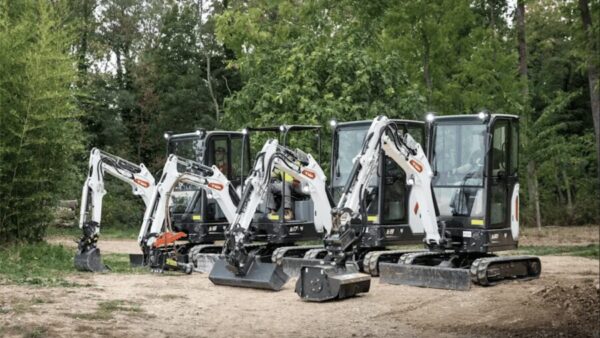A US start-up has invented a robot that can tie together steel reinforcement bars before a concrete pour, saving many back-breaking hours on bridge and other construction projects.
The machine, called the Tybot, uses a robotic arm rigged to a gantry crane that locates rebar junctions and attaches a tie.
Since deck bridges and other structures can have thousands of such intersections, the robot could circumvent a labour-intensive, expensive and injury-prone process – although one of its inventors joked that it was “boring”.
It is the first offering of the firm Advanced Construction Robotics (ACR), launched by construction firm boss Steve Muck and robotics expert Jeremy Searock, formerly of Carnegie Mellon University’s National Robotics Engineering Centre.
“What we’re trying to do at ACR is methodically look at the most difficult critical path challenges, and our first product reflects that, because one of our big challenge is finding people to tie deck rebar,” said Muck, who has experience of building bridges as chief executive of Pennsylvania contractor Brayman Construction, of which ACR is a spin-off.
Muck told the Pittsburg Post-Gazette that when his company, Brayman, built the Hulton Bridge in 2015 it took a crew of up to 10 workers 7,400 man hours between April and September to lay 113,000 square feet of rebar, tying just over 2 million joints.Â
“[Tybot] both speeds up the work and reduces the number of people to do it,” Muck told the newspaper. “This is the construction industry looking to the robotics industry for a solution to a business problem.”
He added that Tybot tie rebar at night or when workers are needed elsewhere.
Academic Jeremy Searock told the paper: “This is a very boring robot that has great application and profitability.”
Elsewhere Searock said that although the robot requires a frame, it is still convenient to set up. “It’s easy to integrate into operations. You can transport it to the project in a 40ft trailer, it takes half a shift to set up, it can deal with decks between 20ft and 145ft wide using the infrastructure already on the bridge.”Â
Once the robot is in position it can operate autonomously with one worker supervising.
Brayman tested the Tybot on a project in Pennsylvania earlier this year and now plans to begin selling its product next spring.
Image: The robot arm has sensors to detect junctions and a gantry crane for mobility (ACR)
Further Reading:
Comments
Comments are closed.











Its amazing that we, as a species, are very happy to make ourselves deliberately redundant after being successful to the detriment of all other life on this “one in a billion” world in the cosmos. When you take away a person’s means of making a living and providing for his family, what will the 8 billion people [The United Nations estimates it will further increase to 11.2 billion by the year 2100] do???
There are many movies since the 60’s with this theme but its not fantasy, its logic.
We love technology ultimately to our detriment. They’ll be riots and wars [they’ve already started].